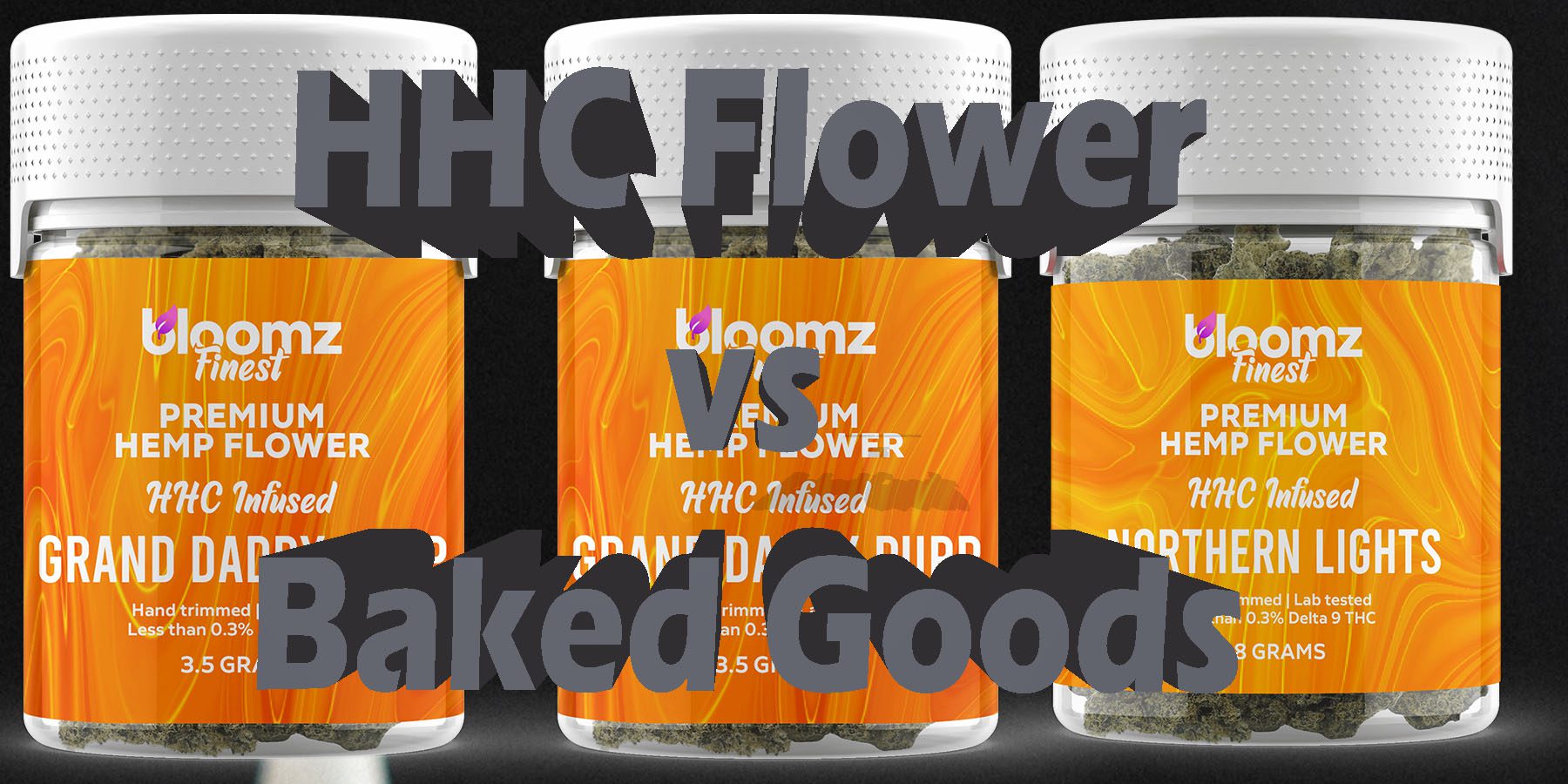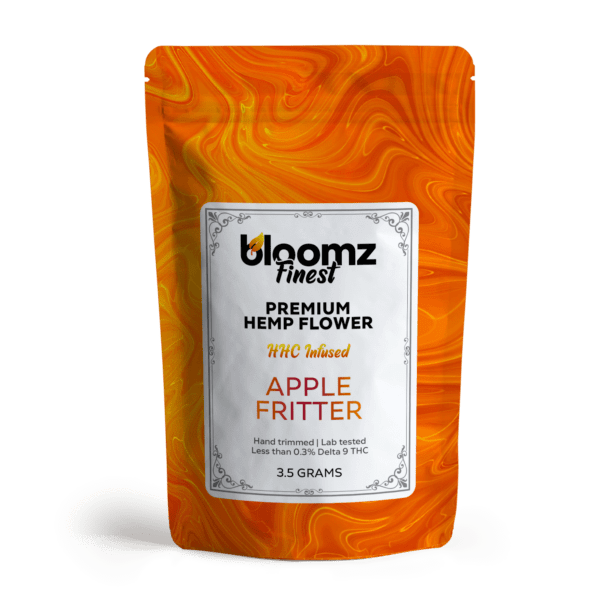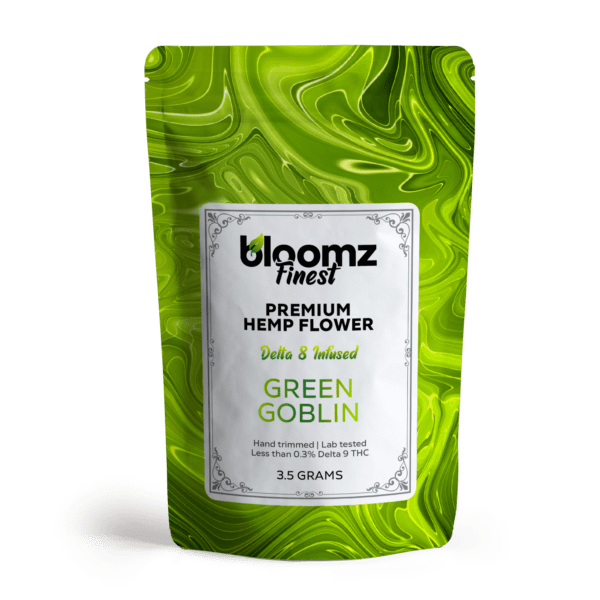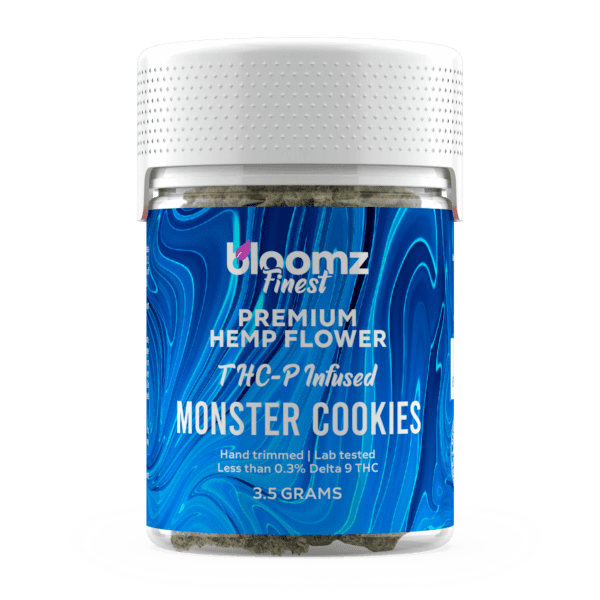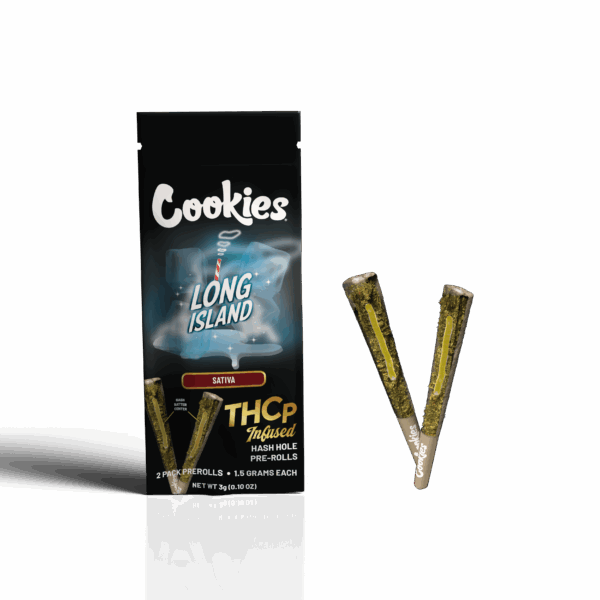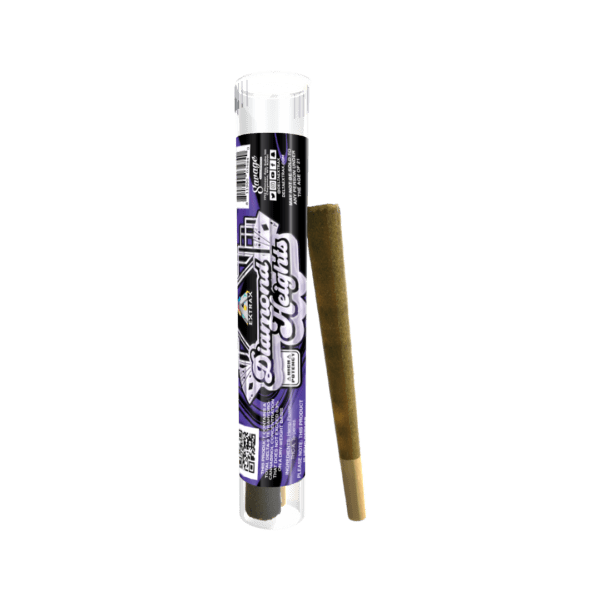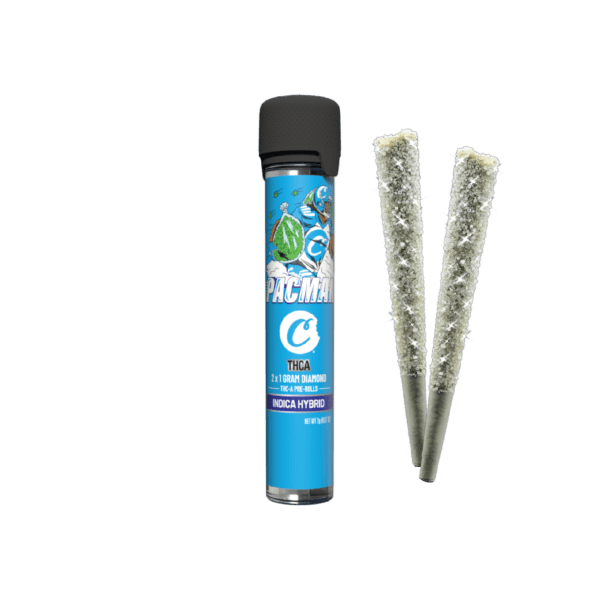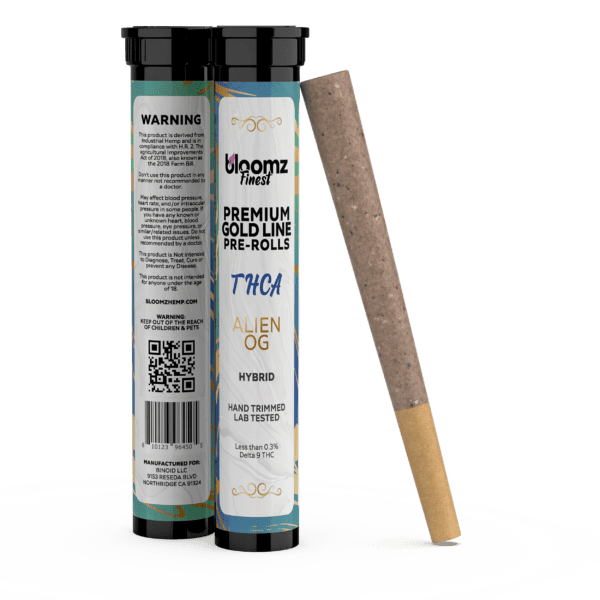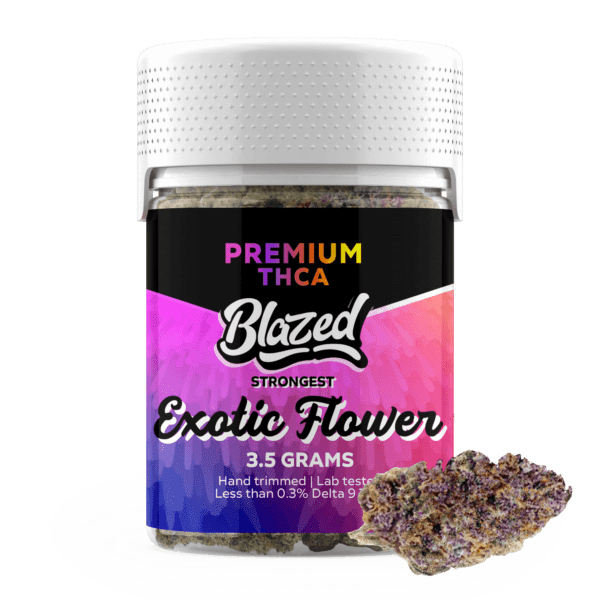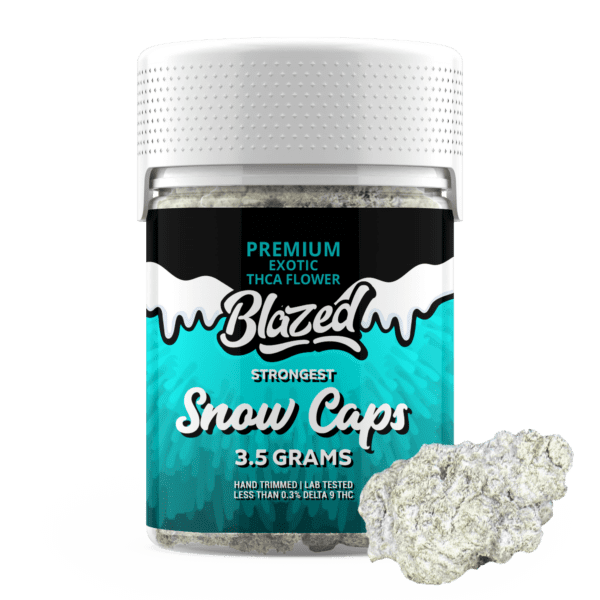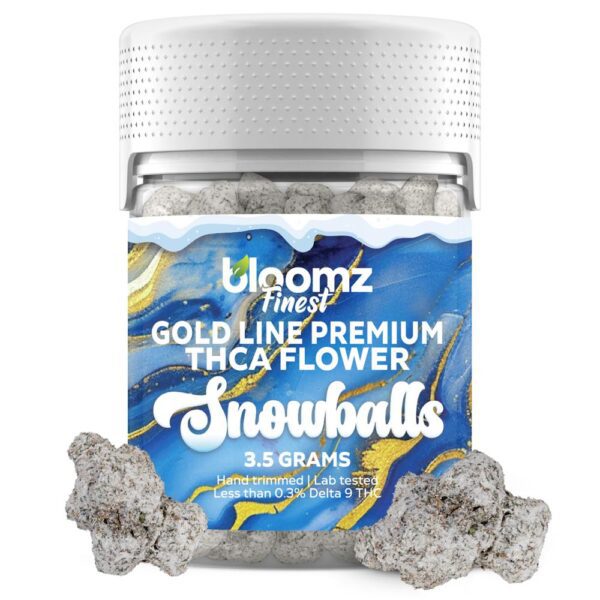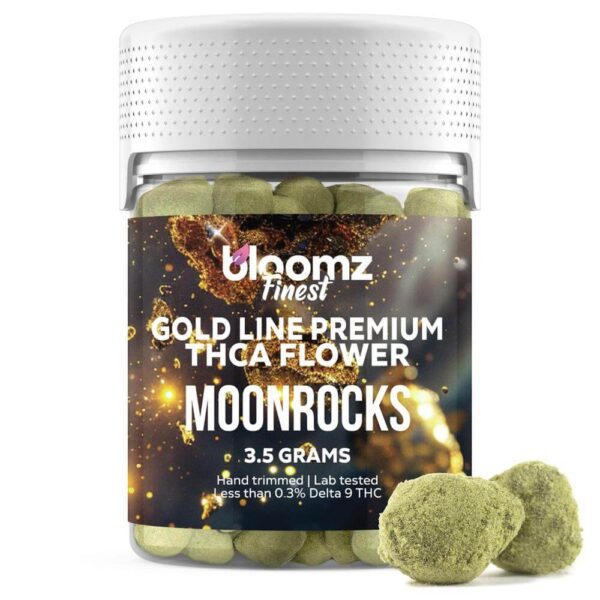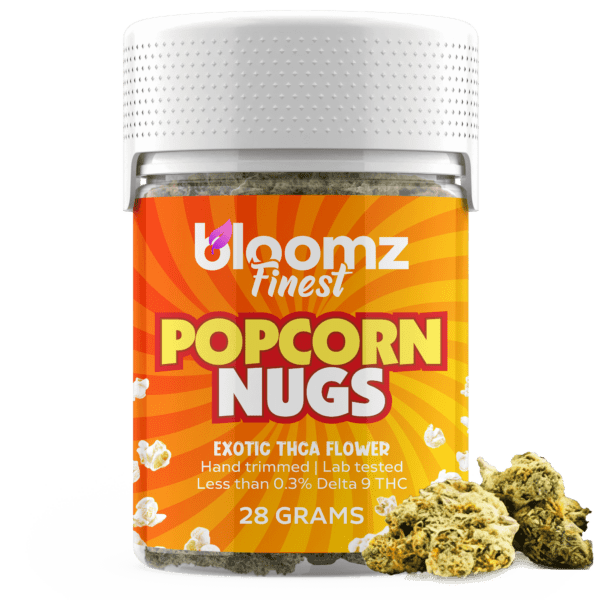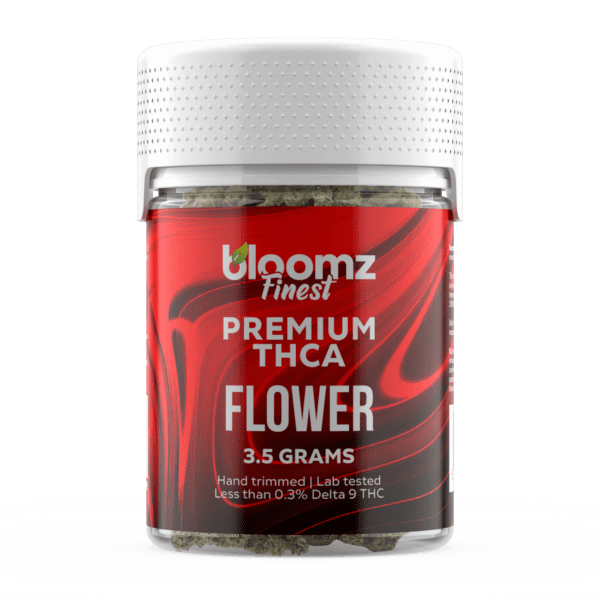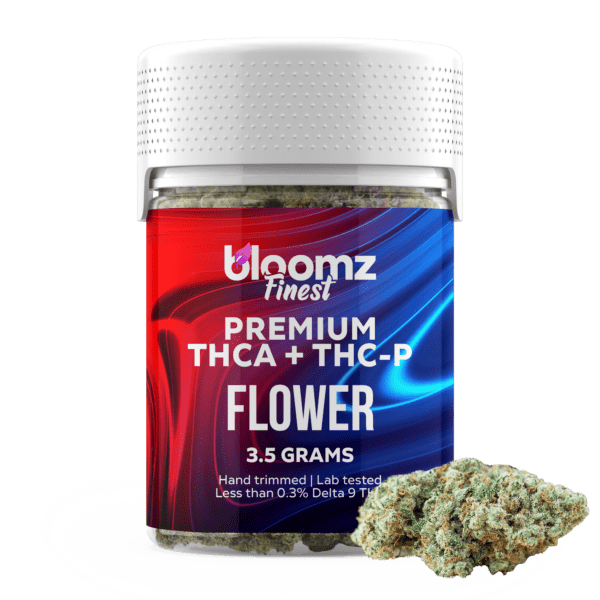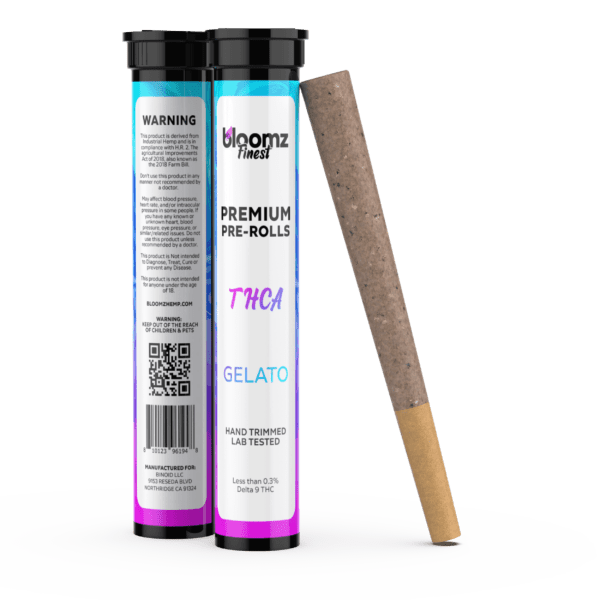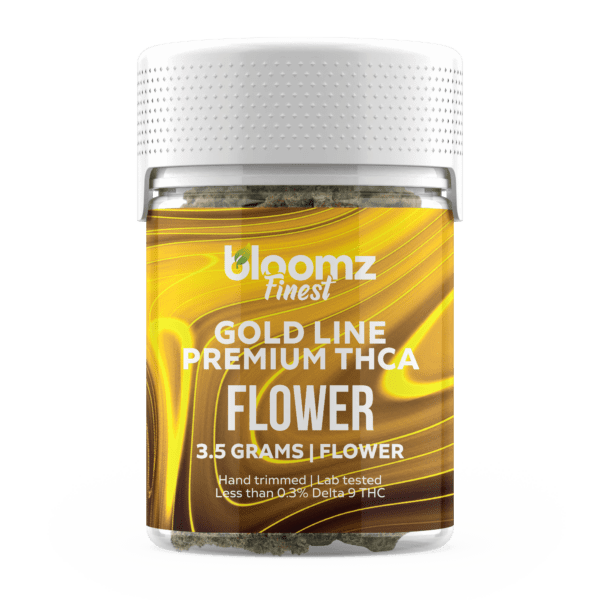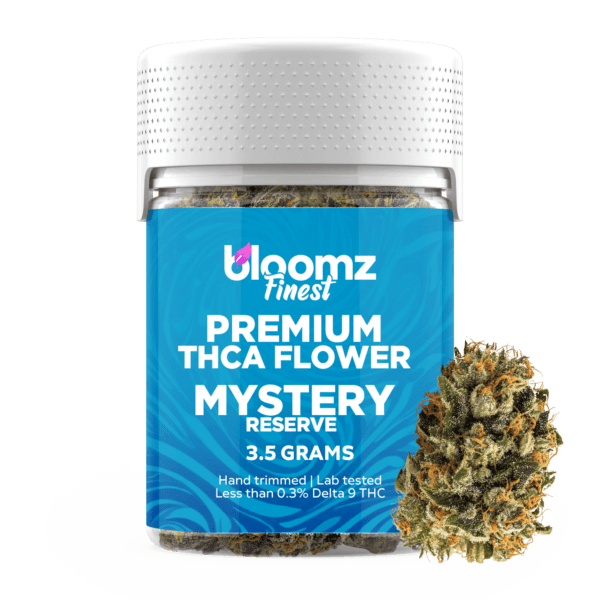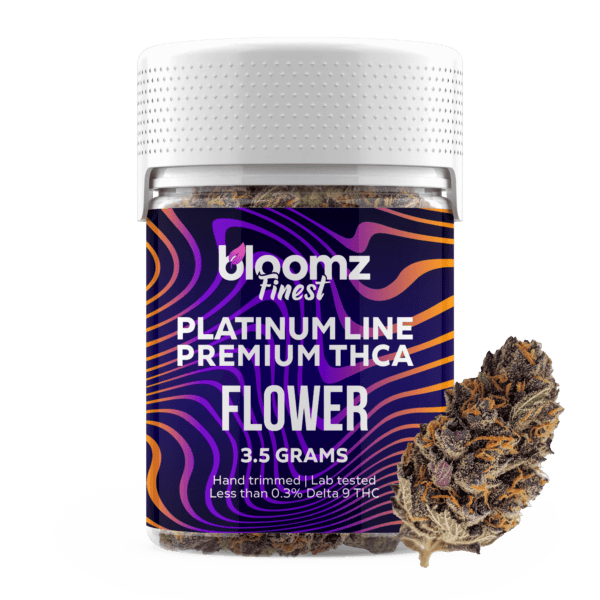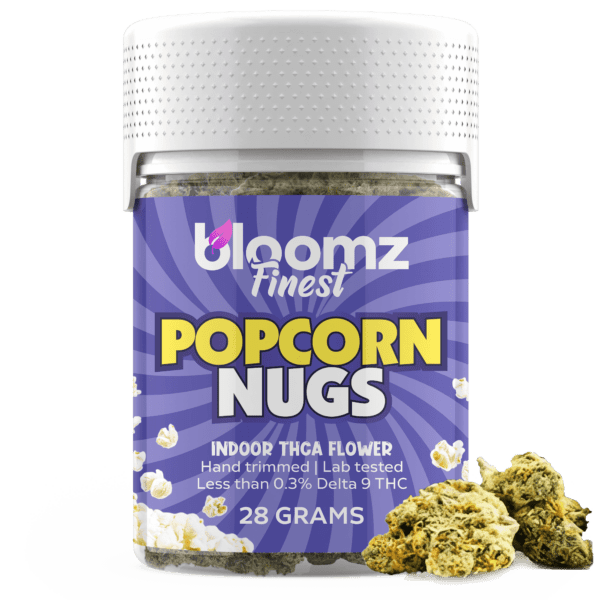In the vast and colorful world of botanical wellness, the paths to personal enjoyment and relaxation are as varied as the individuals who walk them. A fundamental choice often arises between embracing a product that refines a classic ritual and one that delivers a timeless, comforting experience. This very choice is beautifully encapsulated in the comparison between the resilient, aromatic splendor of HHC flower and the nostalgic, delicious appeal of a wellness-intended pre-made baked good.
One invites a tactile, multi-sensory experience: a traditional form that has been scientifically fortified for greater endurance and a longer life. The other offers a more comforting, indulgent, and profound journey: a culinary creation that promises a slow onset and an exceptionally long-lasting state of bliss. To explore this matchup is to weigh the appeal of a resilient ritual against a comforting creation, a decision that ultimately shapes the entire character of the experience to come.
To Buy HHC Flower Click Here
Recommended products
Why It’s Important to Breakdown the Matchup of HHC Flower vs. Wellness-Intended Pre-Made Baked Goods
In an ever-maturing market where consumers are presented with an overwhelming array of choices, a detailed breakdown of two foundational product types like HHC flower and pre-made baked goods is essential for fostering true understanding. These two formats represent fundamentally different philosophies of product innovation: one rooted in the chemical enhancement of a classic form, and the other in the long and cherished history of culinary arts. By carefully dissecting their unique characteristics—from the hydrogenation process that creates HHC to the food science that perfects a brownie—we can illuminate the distinct advantages and trade-offs of each.
This comparative analysis serves as a crucial tool, empowering consumers to move beyond surface-level familiarity and make a conscious, informed decision that aligns perfectly with their personal wellness goals, their demand for discretion, and their desired experience:
-
A Difference in Design: Fortification vs. Formulation: At their core, these two products are born from different design philosophies. HHC flower is a product of fortification. It takes a natural, agricultural product—a high-quality hemp flower—and enhances it with a chemically modified, lab-created HHC distillate to improve its stability and longevity. A pre-made baked good is a product of formulation. It is a complete culinary creation, built from a recipe that combines foundational ingredients like flour, sugar, and fat with a precisely measured dose of an active ingredient. This is the choice between reinforcing an existing classic and creating a new one from scratch.
-
The Experiential Timeline: Inhalation vs. Ingestion: The method of consumption dictates the entire user experience. HHC flower is consumed via inhalation, a process that delivers the active compounds directly to the lungs for rapid absorption into the bloodstream. This results in an onset of effects that can be felt within minutes, allowing for immediate feedback. Baked goods, as a classic edible, must travel the much longer path through the digestive system. This journey, which includes metabolization in the liver, significantly delays the onset of effects, often taking an hour or more. However, this digestive route typically results in an experience that is significantly more prolonged and often felt more intensely throughout the body.
-
Key Attributes: Stability vs. Profound Duration: While both are potent, their key experiential benefits are different. The primary advantage of HHC as a cannabinoid is its enhanced chemical stability. Due to its hydrogenated structure, it is less susceptible to degradation, giving products made with it a potentially longer and more reliable shelf life. The primary advantage of a baked good is the sheer power and duration of its effects. Due to the way it is metabolized by the liver, a baked good can provide an exceptionally long-lasting and deep, body-centric experience that is unmatched by other consumption methods.
-
Navigating the Legal Landscape: Both products operate in the complex legal arena created by the 2018 Farm Bill. However, HHC occupies a particularly contentious gray area. Because it is created through the hydrogenation of a THC molecule, which is itself often converted from CBD, it is several steps removed from the raw plant. This has led many to question its status as a “natural” hemp derivative, and it faces significant legal challenges and bans in several states under arguments that it is a synthetic analogue. Baked goods, while also subject to regulation, often utilize the legal math of the Farm Bill (0.3% Delta 9 THC by dry weight) to create potent yet federally compliant products.
Contender #1: HHC Flower
In the ever-evolving world of hemp-derived products, HHC flower has emerged as a uniquely resilient and intriguing option, earning a reputation as the “armored vehicle” of the cannabinoid flower market. It is a product that offers an experience remarkably similar to traditional THC, but with a key molecular difference that sets it apart: enhanced stability. Like other novel cannabinoid flowers, HHC flower is not a product of simple agriculture but a testament to the power of modern chemistry to modify and improve upon nature’s offerings. It is a carefully crafted composite, a fusion of high-quality, natural hemp flower and a potent, lab-created HHC distillate. Its appeal lies in this combination of the familiar and the fortified, offering the timeless ritual of consuming flower with a cannabinoid that is built to last. For those seeking a classic, euphoric experience in a more durable and long-lasting form, HHC flower stands as a compelling and robust choice.
To fully understand HHC flower, one must first become acquainted with the unique cannabinoid that gives it its name. Hexahydrocannabinol (HHC) is a semi-synthetic cannabinoid that is created through a process called hydrogenation. To understand this, it’s helpful to start with its natural counterpart, THC. HHC is essentially a hydrogenated form of THC. The process is chemically analogous to how liquid vegetable oil is converted into solid or semi-solid margarine. In a laboratory setting, a THC molecule has its double bond in the top ring structure broken and saturated with hydrogen atoms, typically in the presence of a metal catalyst like palladium or nickel. This seemingly simple addition of hydrogen makes the molecule significantly more stable.
It becomes less susceptible to oxidation and degradation from exposure to heat, air, and UV light, which is why HHC products are known for having a much longer and more stable shelf life than products made with THC. This chemical robustness is one of its primary advantages. It’s also important to note that the manufacturing process creates a mixture of two different HHC molecules: 9R HHC, which actively binds to the body’s endocannabinoid receptors, and 9S HHC, which, due to a slight difference in its molecular structure, does not bind as effectively and is considered largely inactive. The ratio of these two isomers in the final product directly impacts its overall potency.
With this crucial scientific context, it becomes clear that “HHC flower” isn’t a strain of cannabis that a farmer can cultivate to be naturally rich in HHC but instead, it’s a manufactured, composite, and infused product. The process begins with high-quality, legally grown hemp flower, which is naturally rich in CBD (cannabidiol) and contains less than 0.3% Delta 9 THC. This beautiful, terpene-rich flower provides the physical structure, the aromatic compounds that create the flavor and smell, and a host of other minor cannabinoids.
This foundational hemp flower then serves as the base which is meticulously infused or coated with a pure HHC distillate, the potent, honey-like oil created through the hydrogenation process. This infusion process is what elevates the simple, non-intoxicating hemp flower into a potent, psychoactive product, delivering the unique and sought-after effects of HHC in a familiar, smokeable format. The quality and safety of the final product are therefore entirely dependent on two separate but equally important factors: the premium quality of the initial hemp flower and the verified purity of the HHC distillate with which it is infused.
Recommended products
The creation of a high-quality and effective HHC flower is a multi-stage process that requires a perfect marriage of expert agricultural practices and precise, high-level laboratory techniques. Each and every step in this complex chain of production is critically important to producing a final product that is safe, potent, consistent, and enjoyable for the end consumer:
-
Cultivation of Premium Hemp Flower: The foundation of any good HHC flower is expertly grown hemp flower. Reputable manufacturers source visually appealing, aromatic, and terpene-rich CBD or CBG flower that has been meticulously cultivated, dried, and cured. The natural terpenes and minor cannabinoids in this base flower are critical as they will provide the aroma, flavor, and contribute to a more nuanced “entourage effect” in the final product.
-
Creation of HHC Distillate: In a separate, highly controlled laboratory environment, the active ingredient is created. The process typically starts with hemp-derived CBD, which is first converted to Delta 8 or Delta 9 THC. This THC is then placed in a specialized reactor, where it is combined with hydrogen gas and a metal catalyst under high pressure. This initiates the hydrogenation process, which saturates the THC molecules to create HHC. The resulting liquid then undergoes extensive refinement and distillation to remove the catalyst and any other unwanted byproducts, yielding a thick, potent, and highly pure HHC distillate.
-
The Infusion and Coating Process: This is the manufacturing step where the hemp flower and the HHC distillate are combined. There are several methods used to accomplish this. A common technique involves lightly heating the thick distillate to reduce its viscosity and then spraying it as evenly as possible over the hemp buds, often while they are being gently tumbled to promote an even coating. A more advanced, solventless technique is “cryo-infusion,” where the HHC distillate is frozen and crushed into a fine powder, which is then dusted over the flower before being gently heated to infuse into the bud.
-
Post-Infusion Curing and Drying: After the sticky distillate has been applied, the flower is often overly moist and tacky to the touch. The product must then undergo a final curing or drying stage to bring it back to an optimal state for consumption. This step is crucial for ensuring the final product is not unpleasant to handle, grinds up properly in a grinder without gumming it up, and burns smoothly and evenly when smoked.
-
Comprehensive Third-Party Lab Testing: Before the final product can be sold, it is absolutely essential that it is tested by an accredited third-party laboratory. The Certificate of Analysis (COA) is the consumer’s most important tool. It not only verifies the potency of the HHC but must also be scrutinized to ensure the product is free from any residual solvents, heavy metals, or leftover catalyst from the hydrogenation process, guaranteeing a safe and clean final product.
The market for HHC flower offers a variety of options that are primarily differentiated by the quality of the base hemp flower used and the sophistication of the infusion process. Because HHC offers an experience very similar to traditional THC, it is a popular choice for enhancement across all tiers of hemp flower quality:
-
Indoor HHC Flower: This is considered the top-shelf option. The process starts with premium, indoor-grown CBD or CBG hemp flower, which is prized for its dense bud structure, vibrant appearance, and rich terpene profile. When this high-quality base is carefully infused with pure HHC distillate, the result is a superior product that delivers the beautiful aroma and flavor of the natural terpenes alongside the potent effects of HHC.
-
Outdoor HHC Flower: This is a more budget-friendly category. The base material is sun-grown, outdoor CBD hemp flower. While often less cosmetically perfect and potentially less aromatic than its indoor counterpart, outdoor flower can still be of high quality and provides a more affordable foundation. Once infused, it delivers the same core HHC effects but may have a more muted flavor and aroma profile.
-
HHC Small Buds: Similar to other types of flower, “small buds” or “smalls” refer to the popcorn-sized buds from a harvest. HHC smalls are simply smaller buds of CBD or CBG hemp flower that have been infused with HHC distillate. They offer the exact same potency and experience as the larger nugs from the same batch but are sold at a lower price point, making them an excellent value.
-
HHC Moonrocks: This is a particularly potent and popular application for HHC. The creation of an HHC moonrock is a three-step process. It begins with a solid nug of CBD or CBG flower, which is then fully coated in a sticky layer of high-purity HHC distillate. While the distillate is still wet, the entire bud is then rolled in a thick blanket of CBD or CBG kief (pure, sifted trichomes). The resulting product is incredibly potent, slow-burning, and offers a powerful, multi-layered experience.
-
HHC Pre-Rolls, Blunts & Joints: For ultimate convenience, many manufacturers offer pre-packaged, ready-to-smoke options. These consist of ground-up HHC flower that has been professionally rolled into papers (joints) or hemp wraps (blunts). They eliminate the need for any grinding or rolling on the part of the consumer, providing a simple, portable, and accessible way to enjoy the effects of HHC flower without any of the associated preparation.
When purchasing HHC flower, it is vital to understand the significance of the “strain” name. A product labeled “Blue Dream HHC Flower” is not a naturally grown HHC strain. The name, in this case “Blue Dream,” refers to the genetic strain of the base CBD or CBG hemp flower that was used in the manufacturing process. The overall experience will be a powerful synergy between the natural terpene profile of that base flower and the potent, overarching effects of the HHC distillate itself. The terpenes from the base strain can help to “steer” or modulate the HHC experience:
-
Indica: When an Indica-dominant CBD hemp strain, known for its relaxing terpene profile rich in compounds like myrcene, is used as the base for HHC Flower, the resulting experience is typically deeply calming and sedating. The natural soothing properties of the Indica terpenes combine with the potent and euphoric body sensation of HHC. This creates a product that is perfectly suited for evening use, helping users unwind, decompress, and sink into a state of profound, blissful tranquility.
-
Sativa: If a Sativa-dominant CBD hemp strain is used as the base, its uplifting and energetic terpenes, like limonene and terpinolene, will combine with the powerful euphoria of HHC. This could result in an intensely cerebral, creative, and uplifting experience. This combination is likely to be very stimulating and is ideal for daytime use, creative projects, or social activities where a potent boost of energy and positive mood is desired.
-
Hybrid: A balanced Hybrid CBD hemp strain used as the base can offer a middle ground. The blend of terpenes may provide both cerebral stimulation and physical relaxation, creating a powerful but potentially more well-rounded experience. This versatility makes hybrid HHC flower a fantastic all-purpose choice that is suitable for a wide range of situations and times of day.
The legal status of HHC flower in the United States is complex and highly contested. Its claim to legality is rooted in the 2018 Farm Bill, which legalized hemp and its derivatives so long as they contain less than 0.3% Delta 9 THC. Since HHC is not Delta 9 THC, it is sold under this provision. However, its legal standing is arguably even more precarious than that of Delta 8 THC. Because it is created through the hydrogenation of THC, which is often first converted from CBD, it is several steps removed from a naturally occurring cannabinoid.
This has led many legal experts and regulators to argue that it falls under the definition of a “synthetically derived” substance and is therefore a controlled substance under the Federal Analogue Act. In response to this ambiguity, a growing number of states have passed laws to explicitly ban or regulate the sale of HHC and other semi-synthetic cannabinoids. The legal landscape is volatile and consumers must research the current laws in their specific location before considering a purchase.
Recommended products
The methods for consuming HHC flower are identical to those for any other type of cannabis flower, as the primary goal is always to apply heat to the product to aerosolize the active cannabinoids for inhalation. The choice of method can impact the overall experience, influencing factors like flavor, smoothness, and convenience. As with other infused flowers, the sticky nature of the HHC distillate can sometimes make the buds more difficult to grind compared to non-infused flower:
-
Vaping (using a portable or desktop vaporizer): Vaporizing is often considered the ideal method for consuming HHC flower. A good vaporizer gently heats the flower to a precise temperature, allowing the HHC distillate and the natural terpenes of the base flower to turn into a vapor without actually burning the plant material. This results in a significantly smoother, cooler, and more flavorful inhale that truly allows the user to appreciate the aromatic profile of the underlying hemp strain.
-
Smoking: This is the most classic, accessible, and straightforward method. It involves the direct combustion of the HHC flower, which can be done in a variety of tools such as a glass pipe, a water pipe (bong), or by rolling the ground material into a joint (paper) or a blunt (hemp wrap). While the intense heat of burning can destroy some of the more delicate terpenes, many users prefer the robust and immediate effects and the time-honored ritual associated with smoking.
-
Cooking/Baking: It is technically possible to use HHC flower to make homemade edibles. The flower would first need to be decarboxylated (heated in an oven) to ensure all cannabinoids are active, and then infused into a fat like butter or oil. Given the precision, convenience, and wide availability of professionally made HHC edibles, most consumers who prefer an ingestible format will simply purchase those products directly.
The overall effects of HHC flower are what make it such a popular choice for those seeking an alternative to traditional THC. The experience is widely reported to be remarkably similar in character to that of Delta 9 THC. It produces a powerful sense of euphoria, a significant mood lift, and a pleasant, warm body sensation that is both relaxing and comforting. The potency is generally considered to be somewhere between that of Delta 8 THC and Delta 9 THC, making it a robust and satisfying experience for most users.
Some users report that the mental effects feel slightly more energetic and less sedating than Delta 9 THC, but this can vary greatly depending on the individual and the terpene profile of the base flower. The primary distinguishing factor of HHC is not so much in its immediate effects, but in its underlying chemical stability, which gives the product its impressive longevity.
Pros & Cons
HHC flower, a product of modern chemical innovation applied to a traditional form, offers a unique and compelling experience. However, its semi-synthetic nature and method of creation come with a very specific set of pros and cons that must be carefully weighed.
Pros:
-
Enhanced Stability and Longer Shelf Life: The single greatest advantage of HHC is its chemical stability. The hydrogenation process removes a double bond that is susceptible to oxidation. This means HHC is significantly more resistant to degradation from heat, light, and air compared to THC, giving HHC flower a much longer and more stable shelf life.
-
Effects are Very Similar to Delta 9 THC: For users seeking the classic, euphoric, and relaxing experience of traditional THC, HHC is an excellent analogue. Many users report that the effects are nearly indistinguishable from those of Delta 9 THC, providing a familiar and satisfying sense of bliss.
-
Legal Accessibility in Certain Regions: Due to its legal standing under the 2018 Farm Bill as a hemp derivative that is not Delta 9 THC, HHC is legally available for purchase in many states where traditional cannabis is not. This provides a legal pathway for many people to access a potent, THC-like experience.
-
Combines Familiar Ritual with a Durable Cannabinoid: HHC flower allows consumers to enjoy the timeless, hands-on ritual of grinding, packing, and smoking or vaping flower. This cherished process is combined with a modern, scientifically fortified cannabinoid that is built to last, offering the best of both worlds.
-
Fast-Acting Effects via Inhalation: Like all forms of flower, the effects of HHC flower are felt almost instantaneously when smoked or vaped. This rapid onset provides immediate feedback and is perfect for users who want to feel the effects right away without the long wait associated with edibles.
-
Wide Variety of Strain Experiences: Because HHC flower is made by infusing high-quality CBD hemp flower, consumers can choose from a vast library of underlying strains. By selecting a product based on an Indica, Sativa, or Hybrid hemp strain, users can tailor the experience to be more relaxing, more uplifting, or more balanced.
-
Potent and Satisfying Experience: HHC is a potent cannabinoid, generally considered to be stronger than Delta 8 THC. It provides a robust and well-rounded experience that is satisfying for both recreational and wellness-focused users seeking a significant effect.
-
Less Intense Aroma Than Some Cannabis: While HHC flower does have an aroma from the base hemp flower, the process of infusing it with distillate can sometimes mute the overall pungency. For some users, this can be an advantage, as it may be slightly more discreet in terms of odor.
-
Supports the Hemp Farming Industry: The creation of HHC flower relies on a steady supply of high-quality CBD and CBG hemp flower. The popularity of this product category directly supports hemp farmers across the country, providing them with a crucial market for their agricultural products.
-
A Functional, Uplifting Buzz: Many users describe the HHC experience as being slightly more energetic and sativa-like compared to Delta 9 THC. This can make it a more functional option for daytime use or social situations where a positive and uplifting mood is desired without heavy sedation.
Cons:
-
It is a Semi-Synthetic, Not Natural, Product: For consumers who prioritize natural products, HHC flower can be a significant compromise. The active ingredient is created through a multi-step chemical process in a lab, including hydrogenation. This artificial nature is a major drawback for purists.
-
Potential for Inconsistent Quality: The quality of HHC flower can vary dramatically between brands. The final product can be negatively impacted by a low-quality base flower, an impure HHC distillate, or an uneven and sloppy infusion process, leading to a harsh or unpleasant experience.
-
Risk of Residual Contaminants: The hydrogenation process used to create HHC requires the use of heavy metal catalysts like palladium. If the final distillate is not properly and extensively refined, there is a risk that these harmful residues could end up in the final product. It is absolutely crucial to only purchase from reputable brands that provide comprehensive, full-panel lab tests.
-
Highly Contentious and Uncertain Legal Status: HHC exists in a precarious legal gray area. Its semi-synthetic nature makes it a prime target for state-level bans and potential federal reclassification under the Analogue Act. Consumers face the risk that the product could become illegal in their area at any time.
Recommended products
-
THC-P HashHole Pre-Rolls – Cookies
$19.99$24.99 -
THCA Pre-Rolls | Diamond Heights – Extrax
$17.99$23.99 -
THCA Pre-Rolls with THCA Diamonds – Cookies
$17.99$21.90 -
Exotic THCA Pre-Rolls Gold Line – 3-Pack/6 Pack
$36.99$69.99
Contender #2: Pre-Made Baked Goods
Entering the arena as a bastion of comfort, familiarity, and timeless culinary delight, wellness-intended pre-made baked goods represent one of the most traditional, beloved, and emotionally resonant forms of edibles. These carefully crafted creations—from decadent, fudgy brownies and soft, chewy cookies to rich blondies and nostalgic cereal treats—tap into a deep well of sensory pleasure and positive association, transforming the act of engaging with wellness ingredients into a genuinely enjoyable and satisfying indulgence.
They stand in stark contrast to the raw, botanical nature of flower, offering instead a finished, skillfully crafted product that requires no preparation, knowledge, or effort on the part of the consumer. The appeal of a baked good is universal and immediate; it is less about a complex, hands-on ritual and more about the simple, satisfying, and comforting pleasure of a delicious bite. In the modern wellness market, these timeless recipes have been reimagined and infused with a wide array of functional ingredients, firmly establishing baked goods as a potent, exceptionally long-lasting, and incredibly approachable option for consumers of all backgrounds and experience levels.
At their essence, wellness-intended pre-made baked goods are ready-to-eat culinary products, crafted using traditional baking techniques, that have been infused with specific active ingredients for a targeted purpose. This category is wonderfully broad, encompassing a familiar and comforting variety of treats. It includes dense, chocolate-laden brownies; their vanilla and brown-sugar-based cousins, blondies; cookies of all imaginable types from chocolate chip to oatmeal raisin; crispy and chewy cereal treats; single-serving cakes and cupcakes; and even an emerging market of savory options like infused crackers or pretzels.
What distinguishes them from their conventional bakery counterparts is the precise addition of functional ingredients. The “pre-made” aspect is absolutely central to their value proposition. They are produced in commercial kitchens and bakeries that adhere to stringent food safety and quality control standards, are tested for consistency and potency, and are then individually packaged to preserve freshness and ensure a reliable experience. This commercial preparation eliminates any need for the consumer to possess baking skills, source specialized ingredients, or dedicate the significant time required for accurate and effective home infusion, offering instead the ultimate in comforting convenience.
The creation of a high-quality, consistently dosed, and delicious pre-made baked good is a masterful blend of culinary artistry and exacting scientific precision. This process takes place in commercial-grade bakeries where the art of the pastry chef meets the rigor of a laboratory technician. Every stage is carefully controlled to ensure that each individual item in a batch is not only safe and delicious but also contains the exact advertised dose of the active ingredient, a level of reliability that is crucial for consumer trust and a positive, predictable experience:
-
Sourcing Quality Culinary Ingredients: The foundation of any exceptional baked good is the quality of its base ingredients. The process begins with sourcing premium components: specific types of flour (like cake flour for a tender crumb or all-purpose for a chewier texture), high-quality sweeteners, and crucially, premium fats like European-style butter with a higher fat content for richer flavor, or refined coconut oil for vegan recipes. The quality of the flavorings, such as high-fat cocoa powder, pure vanilla extract, and fine-ground salt, also has a profound impact on the final product’s ability to be both effective and delicious.
-
Creating the Infused Base: This is the most critical step for dosage accuracy and efficacy. Rather than simply mixing a powdered ingredient into the batter, which would lead to inconsistent distribution, professionals first create an infused base. Typically, this is a fat like butter or oil. The active ingredient, such as a pure hemp-derived cannabinoid distillate, is carefully measured and then thoroughly homogenized into the melted fat. Because cannabinoids are nonpolar, they readily dissolve into lipids (fats), creating a stable and evenly saturated infusion that can be perfectly blended into the main recipe.
-
Precise Mixing and Batter Preparation: The now-infused butter or oil is then incorporated into the full recipe using precise measurements and specific culinary techniques. For example, in cookies, the “creaming method” might be used, where the infused fat and sugar are beaten together to incorporate air, which is essential for a light and tender final texture. The ingredients are mixed in large, industrial-grade mixers to create a perfectly uniform dough or batter, ensuring that the infused fat is evenly integrated and that any given portion of the batter contains a consistent amount of the active compound.
-
Portioning, Baking, and Dosing Control: The prepared batter or dough is then meticulously portioned. Automated depositors may place exactly sized pucks of cookie dough onto baking sheets, or an exact weight of brownie batter is spread into pans. The products are then baked under tightly controlled temperatures and times. The heat of the oven triggers crucial chemical reactions like caramelization of sugars and the Maillard reaction between amino acids and reducing sugars, which together create the deep, complex, and browned flavors that are characteristic of baked goods and are highly effective at masking any residual botanical flavors. The final dose of each item is determined by this precise portioning.
-
Cooling and Quality Assurance Testing: After baking, the goods must be properly and thoroughly cooled on racks before they can be packaged. This is a critical step that prevents condensation from forming in the package and allows the internal structure, or “crumb,” of the baked good to set properly. During this phase, representative samples are pulled from the batch and sent to a third-party laboratory. This lab conducts a full panel of tests, verifying not only the potency of the active ingredient but also screening for any potential microbial contaminants like yeast and mold, as well as food allergens, to ensure the product is completely safe for consumption.
-
Individual Wrapping and Final Packaging: Once the baked goods have passed quality control, they are individually wrapped and sealed. This is a crucial step for maintaining optimal freshness, preventing the product from going stale, and ensuring hygiene. These wrapped items are then placed into their final retail packaging, which may utilize advanced techniques like modified atmosphere packaging (MAP), where oxygen is removed and replaced with nitrogen to dramatically extend shelf life by preventing oxidation. The packaging is always clearly labeled with all necessary dosage, ingredient, and nutritional information.
The world of wellness-intended pre-made baked goods is wonderfully diverse, offering a comforting array of options that cater to different tastes, dietary needs, and desired experiences. The inherent versatility of baking allows for an almost endless variety of infused creations, from classic, indulgent treats to more health-conscious alternatives. This breadth of choice ensures that nearly everyone can find a baked good that resonates with their personal palate and wellness goals, making it one of the most accessible and enjoyable categories of edibles on the market.
This includes the iconic, rich, and fudgy brownies, whose intense chocolate flavor is a perfect medium for masking the taste of hemp extracts. Cookies offer incredible variety, from the timeless chocolate chip to oatmeal raisin and peanut butter. Cereal treats, made with a simple base of marshmallow and butter, are exceptionally easy to infuse and offer a light, chewy texture. Even cakes and cupcakes are available for a more celebratory experience. The market is also seeing a rise in savory options, like infused cheese crackers or pretzels, for those who don’t have a sweet tooth.
A significant and growing segment of the wellness market is dedicated to pre-made baked goods that are crafted not for psychoactive effects, but for their enhanced nutritional value. These products leverage the familiar and comforting format of baked goods to deliver beneficial vitamins and minerals, appealing to health-conscious consumers and those with specific dietary goals. This category can be broken down into two main approaches. The first is creating naturally vitamin-rich baked goods, which focuses on a “whole foods” philosophy. This involves using ingredients that are inherently packed with nutritional value. For example, muffins made with 100% whole grain flours are naturally rich in B vitamins and fiber, while adding banana provides potassium, or pumpkin puree provides a boost of Vitamin A.
The second approach is creating fortified baked goods. Fortification is the scientifically established process of intentionally adding micronutrients to staple foods. This practice has a long and successful history as a public health initiative to combat nutritional deficiencies. The most common example is the mandatory enrichment of refined white flour in the United States with a specific suite of B vitamins—thiamin, riboflavin, niacin, and folic acid—as well as iron. This means that many commercially available baked goods are, by default, contributing to the consumer’s daily intake of these essential nutrients.
The most prominent and rapidly growing category within wellness-intended baked goods is undoubtedly those infused with hemp-derived cannabinoids. These products have transformed the landscape, offering a delicious and powerful method for experiencing the wide range of effects these compounds can produce. The key to their creation lies in the infusion process. Because cannabinoids are fat-soluble (lipophilic), they must be infused into a fat source to be effectively distributed throughout a recipe and properly absorbed by the body.
This is typically achieved by creating “cannabutter” or an infused cooking oil (like coconut or MCT oil), where a cannabinoid extract or distillate is gently heated and bonded with the fat molecules. This infused fat then becomes the base for the entire recipe. The high fat content inherent in most baked goods like brownies and cookies not only makes them ideal vehicles for infusion but also may enhance the bioavailability of the cannabinoids, as fats help the body to absorb these compounds more efficiently through the digestive system. These baked goods can be infused with the full spectrum of cannabinoids available, from non-intoxicating CBD for general wellness to intoxicating options like Delta 8 THC and Farm Bill-compliant Delta 9 THC for profound euphoria and relaxation.
The overall effects of pre-made, infused baked goods are governed by the universal principles of oral ingestion and are often described as being the most profound and enveloping of any consumption method. The experience is characterized by a significantly delayed onset and a remarkably prolonged duration. After a baked good is consumed, it is essentially treated like any other food. It must first be mechanically and chemically broken down by acids and enzymes in the stomach, a process that can be influenced by the other foods present. The active ingredients are then absorbed through the lining of the small intestine and routed directly to the liver via the hepatic portal vein. It is in the liver that the critical process of “first-pass metabolism” occurs.
Here, a family of enzymes known as Cytochrome P450 goes to work, metabolizing the cannabinoids. A compound like Delta 9 THC is converted into a different, more powerful metabolite called 11-hydroxy-THC, which is particularly effective at crossing the blood-brain barrier. It is this potent metabolite that is largely responsible for the intense, long-lasting, and distinctly body-focused experience of edibles. This entire journey accounts for the delayed onset of 45 minutes to over two hours. However, it is also what creates the slow, steady, and deep wave of effects that can last for six to ten hours or even longer.
Pros & Cons
The familiar comfort and culinary delight of pre-made baked goods make them an incredibly appealing option, but like any product, they come with a distinct set of pros and cons. Their advantages are often centered on their enjoyable nature, potency, and ease of use, while their disadvantages tend to relate to dietary concerns, dosing challenges, and their slow onset. A clear understanding of these points is key to deciding if they are the right fit for your wellness journey.
Pros:
-
A Familiar and Comforting Format: For many people, the act of eating a cookie, brownie, or other pastry is deeply comforting and nostalgic. This inherent familiarity makes baked goods a very approachable and non-intimidating format, especially for individuals who are new to infused products. It feels less like taking a supplement and more like enjoying a well-deserved treat.
-
Exceptionally Delicious and Enjoyable: One of the greatest advantages of baked goods is their taste. Skilled commercial bakers are able to create genuinely delicious products where the rich flavors of chocolate, vanilla, peanut butter, or spices completely mask the often-unpleasant earthy taste of botanical extracts. This focus on culinary quality makes for a truly enjoyable consumption experience.
-
Potent and Extremely Long-Lasting Effects: Due to the process of digestion and liver metabolism, the effects of infused baked goods are notoriously potent and long-lasting. A single, properly dosed brownie can provide a sustained experience that lasts for many hours, making it an excellent and efficient choice for a full day of relaxation or a long, restful night without any need for re-dosing.
-
High Fat Content May Aid Absorption: Cannabinoids are fat-soluble, meaning they are absorbed by the body more effectively when consumed with fats. Since most baked goods are made with significant amounts of butter, oil, or eggs, they provide a naturally effective vehicle for cannabinoid delivery. This high fat content can enhance the bioavailability of the active ingredients, potentially leading to a more efficient and powerful effect.
-
Requires No Special Equipment or Knowledge: Pre-made baked goods are the essence of convenience. They are ready to eat straight out of the package, requiring no grinders, vaporizers, lighters, or any other form of paraphernalia. This simplicity and ease of use make them accessible to absolutely everyone, regardless of their experience level.
-
A Wide Variety of Culinary Options: The world of baking is vast, and this variety is reflected in the infused edibles market. Consumers can choose from a huge range of products to suit their specific cravings, from fudgy brownies and crispy cookies to chewy cereal treats. This diversity ensures that there is a tasty option for nearly every palate.
-
Completely Discreet and Odor-Free: An infused cookie or brownie looks and smells exactly like its non-infused counterpart. This makes them an incredibly discreet way to consume wellness ingredients. They can be packed in a lunch, enjoyed as a dessert, or eaten on the go without producing any noticeable odor or drawing any unwanted attention.
-
A Perfect Smoke-Free Alternative: For the large population of consumers who cannot or do not wish to inhale smoke or vapor for health reasons or personal preference, baked goods provide an ideal solution. They offer a potent and effective way to experience the benefits of cannabinoids and other botanicals that completely bypasses the respiratory system.
-
Made with Real, Recognizable Food Ingredients: Unlike some other processed edibles, baked goods are typically made from a list of familiar, real food ingredients like flour, sugar, butter, and eggs. For consumers who prefer to eat products made from recognizable kitchen staples rather than more abstract chemical formulations, this can be a significant advantage.
-
Great for Sharing in Social Settings: A tray of cookies or a pan of brownies can be a fun and communal way to enjoy infused products with friends (provided everyone is of legal age and consents). This format lends itself well to social gatherings, allowing for a shared experience, as long as there is clear communication about the dosage and responsible consumption is practiced by all.
Cons:
-
Typically High in Calories, Sugar, and Fat: While their deliciousness is a pro, it comes at a dietary cost. Most traditional baked goods are, by their nature, high in calories, refined sugars, and saturated fats. This can be a significant drawback for individuals who are diabetic, on a weight management plan, or are simply trying to maintain a health-conscious diet.
-
Extremely Difficult to Dose with Precision: Accurately dosing a baked good is notoriously challenging. While the entire batch may be tested for potency, it is hard for a consumer to know if they are getting a perfectly average piece. Furthermore, cutting a 100mg brownie “in half” to get a 50mg dose is an imprecise act that can easily lead to under- or over-dosing, making consistent and repeatable experiences difficult to achieve.
-
Very Slow Onset Can Lead to Overconsumption: The long and variable delay before the effects of a baked good are felt is one of its biggest risks. An impatient or inexperienced user might mistakenly believe the product isn’t working after an hour and decide to eat more. This common mistake can lead to a delayed and uncomfortably overwhelming experience when the combined doses finally take effect.
-
Shorter Shelf Life Than Other Edibles: Unlike shelf-stable products like gummies or tinctures, baked goods are made with perishable food ingredients like butter and eggs. They can go stale, dry out, or even grow mold if not stored properly and consumed within a reasonable timeframe. This shorter shelf life makes them less suitable for long-term storage.
-
Common Allergens Are Often Present: The foundational ingredients of most traditional baked goods include some of the most common food allergens. This includes wheat (gluten), dairy (butter, milk), eggs, and often nuts. This can make it difficult or impossible for individuals with these allergies or sensitivities to find a suitable product.
How to Go About Choosing Which Option
The journey to choosing between the resilient ritual of HHC flower and the indulgent journey of a wellness-intended baked good is a deeply personal one. This decision is not about finding a universally “better” product but about discovering the product that is unequivocally better for you. By reflecting on the fundamental differences in experience—the rapid, ritualistic inhalation of a fortified flower versus the slow, profound, and delicious ingestion of a formulated pastry—you can begin to map out which path aligns more closely with your needs. Consider the context in which you’ll be using the product, the speed and duration of the effects you’re seeking, and your personal philosophy on manufactured versus formulated products. This self-assessment is the key to making a choice that feels both satisfying and perfectly suited to your life.
To further clarify this choice, let’s break down the decision-making process into several key lifestyle and preference factors. By considering where you stand on each of these points, the right option will likely become much clearer:
-
Desired Onset and Duration: The most critical question to ask yourself is: “When do I want to feel the effects, and how long do I want them to last?” If you are seeking immediate feedback and an experience that you can control in real-time, perhaps for a shorter relaxation session, the rapid onset of inhaled HHC flower is unmatched. Conversely, if your goal is to have a sustained, deep, and long-lasting experience that carries you through an entire evening or a full day of leisure, the slow-release, marathon-like effects of a baked good are far more suitable.
-
Lifestyle and Discretion: How does this product need to fit into the fabric of your daily life? Do you cherish the idea of a hands-on ritual—the grinding of aromatic flower, the packing of a bowl—and have a private, comfortable space to enjoy it? If so, the tactile and sensory experience of HHC flower will be deeply rewarding. However, if your life demands discretion, portability, and the ability to consume a product without any fuss, odor, or paraphernalia, then the grab-and-go simplicity of a pre-packaged baked good is the undeniable winner.
-
Key Feature: Stability vs. Nostalgic Potency: What is more important to you in a product? Are you drawn to the unique chemical stability of HHC, which offers a longer shelf life and greater resilience to degradation, ensuring your product stays potent for longer? Or do you value the profound, deep, and enveloping experience that only a classic, fat-rich edible like a baked good can provide, tapping into a sense of nostalgia and comfort?
-
Dosing Style: How do you prefer to manage your dose? Do you want the ability to titrate your experience puff-by-puff, taking it slow and adjusting the intensity of the effects in real time? Or are you comfortable with a single, potent dose that you commit to for a long duration, even if dividing it is imprecise? This is the choice between the intuitive control of flower and the committed journey of a baked good.
|
Feature |
HHC Flower |
Pre-Made Baked Goods |
|---|---|---|
|
Product Nature |
Enhanced Agricultural Product (Infused Hemp) |
Formulated Culinary Product (Made from scratch) |
|
Primary Active |
HHC (Hexahydrocannabinol) |
Variable (CBD, HHC, Delta 9, etc.) |
|
Onset Time |
Fast (2-10 minutes) via inhalation |
Very Slow (45-120+ minutes) via ingestion |
|
Duration of Effects |
Shorter (2-4 hours) |
Very Long (6-10+ hours) |
|
Dosing Control |
High real-time control (intuitive titration) |
Low precision (difficult to divide evenly) |
|
Key Advantage |
High chemical stability and longevity |
Extremely long-lasting and potent effects |
|
Experience |
Ritualistic, sensory, rapid feedback |
Simple, comforting, slow and profound build |
|
Best For |
Users wanting a potent, stable, and fast-acting flower experience |
Users seeking a deep, powerful, and very long-lasting edible journey |
The Enduring Flame and The Slow Burn: A Final Reflection
In the final analysis, the decision between HHC Flower and an infused baked good is a choice between two distinct philosophies of experience. The HHC flower is the enduring flame—a classic, timeless ritual that has been scientifically fortified to burn brighter and be more resilient against the winds of time and degradation. It offers an immediate warmth and a steady, reliable light. The infused baked good, in contrast, is the slow burn of embers in a hearth. It takes time to build its heat, slowly gathering strength until it radiates a deep, profound, and long-lasting warmth that permeates every corner of your being.
Neither the enduring flame nor the slow burn is inherently superior. The truly enlightened choice is to understand the nature of the fire you wish to kindle, selecting the one that will most perfectly and satisfyingly warm your own personal quest for blissful relaxation and contentment.
To Buy HHC Flower Click Here
Recommended products
-
THCA Flower – Indoor Exotics – Gold Line
$37.99$69.99 -
THCA Flower – Mystery Reserve
$41.99$79.99 -
THCA Flower – Platinum Line
$49.99$79.99 -
THCA Smalls
$149.99$256.99

